
Japanese maples in pots: selection, planting and care
All our tips for successful growing
Contents
Growing Japanese maples in pots allows you to enjoy their beauty if your garden soil is unsuitable, or to admire them on a terrace, balcony or in an urban courtyard. With finely cut foliage of rare elegance, these partial-shade Japanese maples brighten the late season with their superb autumn colours. Japanese maples fit into every setting, from the most ‘zen’ to the most modern.
Of slow growth and compact, some are even dwarf varieties, fitting into any space, even the smallest. Planting, maintenance and pruning of these very decorative bushes is simple, provided you follow certain rules. Follow all our tips to successfully grow your Japanese maple in a pot!
Choosing your Japanese maple
Japanese maples offer surprising diversity. Very decorative, they become garden stars when, in autumn, they don flamboyant colours. Slow growth and moderate development of these bushes make them easy to grow in a pot. Larger ones need slightly bigger pots, but dwarf Japanese maples are also available. You will find a fine selection in this article: “Dwarf Japanese maples: best varieties”.
In any case, bear in mind that a tree grows less in a container than in open ground, which gives you some leeway.
Among my favourite Japanese maples are:
- ‘Jordan’ shows a soft green in spring, then turns golden-yellow and orange in autumn.
- ‘Orange Dream’ comes into leaf in bright orange tones, then goes green in summer and finishes in golden and orange hues.
- ‘Atropurpureum’ shifts from purple to vivid red in autumn.
- ‘Butterfly’ offers foliage tinged with pink in spring, then variegated cream and green thereafter.
- Leaves can be broader and palmate, as those of ‘Ozakazuki’, while others, like ‘Garnet’, bear leaves cut like lace. ‘Aconitifolium’ in turn mimics leaves of aconites.
- Some barks are also remarkable, such as that of ‘Sangokaku’, whose coral tones intensify in mid-winter.
- Among Japanese maples, you can choose one with a spreading, weeping habit such as offered by ‘Ornatum’, or prefer the more upright habit of ‘Katsura’.

Some examples of Japanese maples for growing in pots: ‘Orange Dream’, ‘Dissectum Garnet’ and ‘Aconitifolium’
Which pot for my Japanese maple?
To successfully to grow a Japanese maple in a pot, choose a suitable container. Here are my tips :
- As Japanese maples develop a rather horizontal root system, opt for a fairly wide pot.
- Match pot size to bush. Plant your maple in a pot slightly larger than the rootball. Gradually increase the container size during subsequent repottings.
- Avoid bulbous pots whose top narrows, as these make future handling difficult.
- Synthetic materials (plastic, PVC, fibreglass…) retain moisture well, as do glazed pots which are also more attractive. Ensure they are frost-resistant. Terracotta containers, being highly porous, cause the substrate to dry out more quickly.
- Ensure a drainage hole is present in the bottom of the pot. If necessary, drill one yourself.
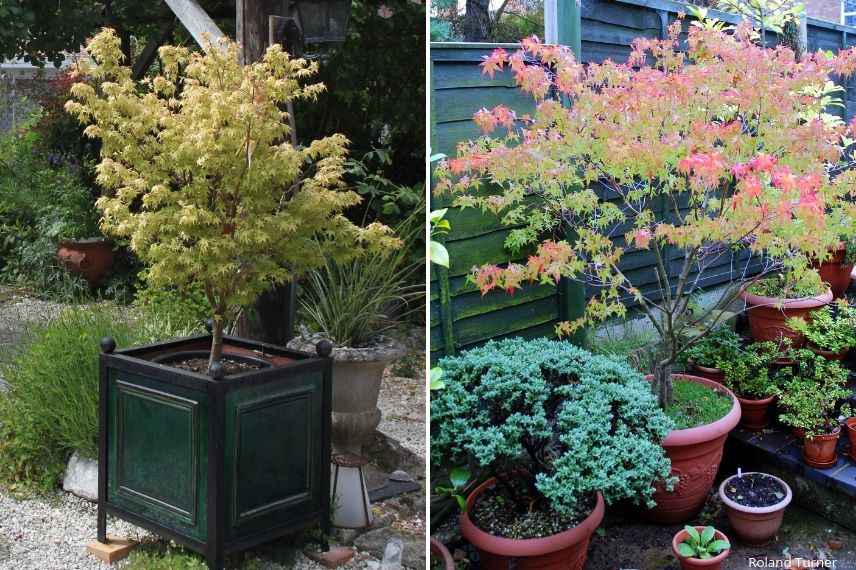
Examples of containers… beware that terracotta dries out very quickly!
Discover other Japanese Maples
View all →Available in 6 sizes
Available in 1 sizes
Available in 1 sizes
Available in 1 sizes
Available in 1 sizes
Available in 4 sizes
Available in 1 sizes
Available in 3 sizes
Available in 2 sizes
Available in 3 sizes
What potting compost is best for a Japanese maple in a pot?
Use a well-draining, airy substrate that remains cool, with pH neutral to acidic. Ideally, mix your own suitable blend, such as:
- 1/2 of a good commercial potting compost, fibrous and humus-bearing (avoid homemade compost, which can potentially carry diseases)
- 1/4 of small-grade pine bark
- 1/4 of perlite, vermiculite, small gravel or river sand
- Add a good handful of horn meal, which gradually releases nitrogen to your maple.
Note: although it belongs to heather soil bushes, we do not recommend heather soil. Find out why in this article : “Heather soil: how to use it well in the garden”
Read also
Japanese maples: diseases and pestsHow to plant and where to place a Japanese maple in a pot?
Planting stages
- Start by installing a drainage layer at bottom of pot (clay pebbles, for example), to a depth of about 5–10 cm.
- Cover drainage layer with a geotextile fabric. It will prevent roots from mixing with drainage while allowing excess water to escape.
- Pour part of your potting mix into the pot and tamp down by hand. Correct amount is that which allows you to place the rootball so its surface is roughly level with top edge of container.
- Place your Japanese maple in centre of pot and check it is upright. Ensure collar (junction point between trunk and roots) is not buried.
- Fill around rootball with remaining potting mix and tamp down again.
- Water thoroughly, in several stages, to settle soil around plant.
- Cover with a layer of mulch (pine bark, for example) to keep roots cool.
Where to place my Japanese maple in a pot?
Japanese maples do not like scorching exposures. Favor semi-shaded positions where your bush benefits from a few hours of sun during day but remains protected from midday sun. Canopy of a deciduous tree providing dappled shade is ideal. If leaves get too hot, Japanese maple leaves can brown, dry out or even fall. In cooler regions, a sunnier exposure is possible. Japanese maples tolerate denser shade, but their autumn colouring will be less vivid there.
Generally, purple-leaved maples tolerate bright, sunny exposures slightly better than those with lighter foliage.
Position your Japanese maple sheltered from cold, drying winds, which can damage foliage.
A potted Japanese maple can be placed in garden (if soil is unsuitable) and also works wonderfully on a terrace, balcony or in a patio. Pair with other plants for charming displays, such as those suggested in our article Japanese maples: 9 successful pairing ideas
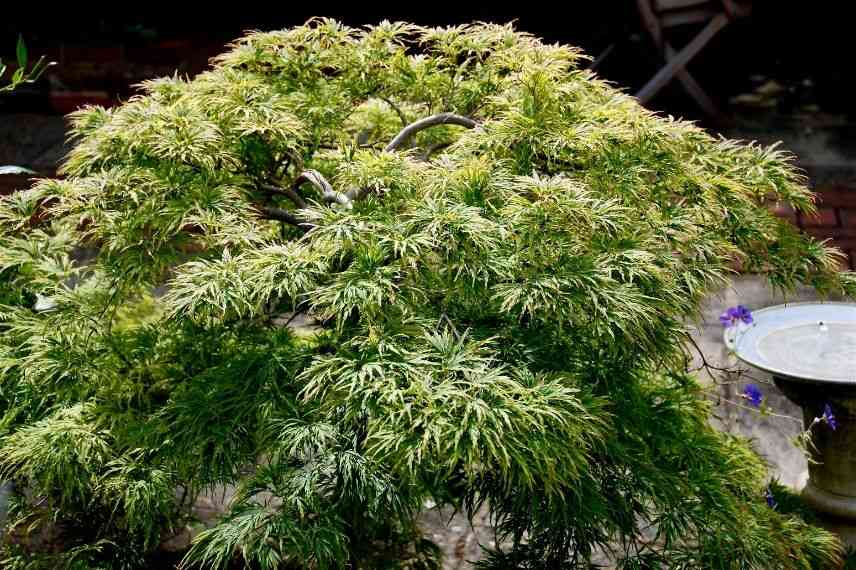
Caring for potted Japanese maple: watering, fertilising, repotting, pruning
Watering a Japanese maple in a pot
The Japanese maple likes cool but well-drained soil. In a pot, the smaller volume of soil, requires regular watering during the growing season (about 1–2 times per week).
To know whether watering is necessary, push a finger into the substrate. If it comes out dry, water; if it comes out moist, do not water.
Water preferably in the evening, once the day’s hottest hours have passed. Make sure your water is not too hard; if it is, use rainwater. Quantity depends on container size, but when water runs out of the bottom of the pot, that is a sign the watering is sufficient. In the warmest regions, do not hesitate to add a dose of water-retaining agent such as Stockosorb to the substrate at planting.
In autumn, natural rainfall is usually sufficient, but water during dry spells.
In winter, watering is usually unnecessary. If you must water, do so outside freezing periods.
In all cases, the substrate must remain moist but never waterlogged, otherwise roots may be asphyxiated or disease favoured.
Feeding a Japanese maple in a pot
Not demanding, the Japanese maple nevertheless benefits from being fertilised when grown in a pot. A fertiliser for ericaceous plants is suitable. Make this application in late winter or early spring, when the bush develops its first leaves. Follow dosage instructions on the packaging.
Avoid using homemade compost, a potential source of diseases and parasites.
Repotting a Japanese maple
It is recommended to repot a Japanese maple every 3–5 years, between mid-November and mid-February, always avoiding frost periods.
Young plants should be repotted into a slightly larger container.
Mature, well-sized Japanese maples can be repotted into the same container, provided part of the substrate is changed and the roots are pruned slightly.
- How to repot a young Japanese maple?
- Remove the root ball from its container.
- Clean and disinfect the pot (soapy water with a disinfectant), and rinse thoroughly.
- If necessary, untangle the roots slightly (especially if they have wrapped around the bottom of the pot). If needed, trim their tips with a disinfected pruning shear.
- Install drainage and substrate, as for a standard potting.
- Replace the root ball in the pot, fill with your mix, water and mulch.
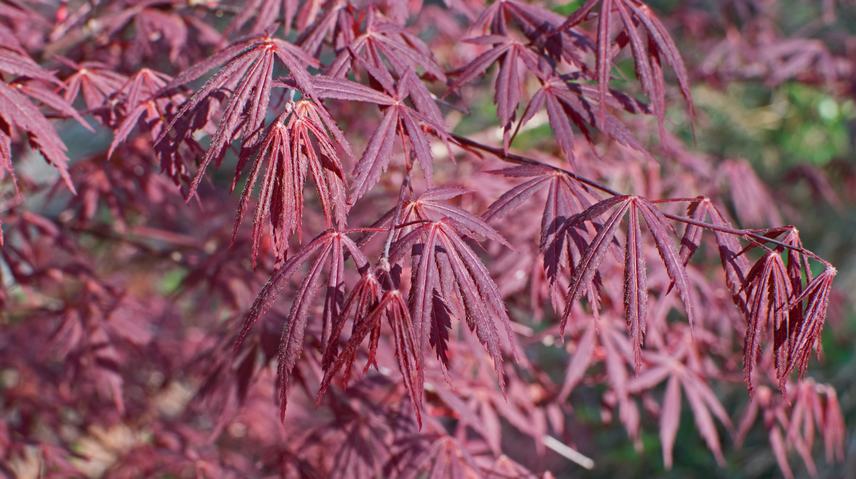
- How to repot an adult Japanese maple?
- Remove the bush from its container, tipping the pot.
- Clean, disinfect and rinse the pot.
- Scrape the root ball to free about 1/4 to 1/3 of the roots. Using a jet of water can make this easier.
- With a disinfected pruning shear, cut back the largest roots to encourage them to reform a good root hairs system. Never remove more than one-third of the roots.
- Prepare the container (drainage, substrate) and place your specimen in the centre, ensuring the collar is at the same level as the soil. Fill with your mix.
- Water very generously to remove any air pockets, and mulch.
Top-dressing a Japanese maple
Top-dressing is a technique that avoids repotting, which can be useful for large specimens whose handling is difficult or impossible.
It is carried out between November and February, as follows:
- Remove the mulch from the pot surface.
- Scrape the surface soil a few centimetres with a hand fork. Try not to damage the roots and above all avoid damaging the trunk and its base.
- Replace the removed soil with a suitable mix. Add a handful of slow-release fertiliser, such as horn meal.
- Water well and mulch.
How to prune a Japanese maple in a pot?
Slow-growing bush, the Japanese maple usually does not need pruning. You can however wish to balance its shape or remove dead wood.
In summer, cut small dead wood and dry twigs, which are easier to spot, with a well-sharpened, disinfected pruning shear.
Larger cuts should be made in winter. Use a pruning shear, loppers or a pruning saw, disinfecting the tools between each specimen pruned. Make clean, neat cuts. Consider painting them with a wound sealant.
To learn more about these very decorative bushes, feel free to read our dossier on Japanese maples: planting, pruning and care.
Overwintering and diseases of potted Japanese maple
When planted in good conditions, with the right exposure and regularly maintained, Japanese maples can live for a very long time in pots.
Although hardy (-15°C to -20°C), it may be necessary to protect Japanese maples grown in pots in case of prolonged severe cold.
A few precautions can be taken:
- if pot is not too heavy, place it on blocks to isolate it from the soil.
- wrap the pot in layers of cardboard or bubble wrap, held in place with string.
- install a winter fleece around the branches, which you will remove as soon as the weather warms.
Japanese maples can be susceptible to various diseases (verticillium wilt, coral disease, honey fungus), some of which can be fatal. They can also be attacked by pests. To recognise and identify them, read our article on diseases and pests of Japanese maples.
- Subscribe!
- Contents
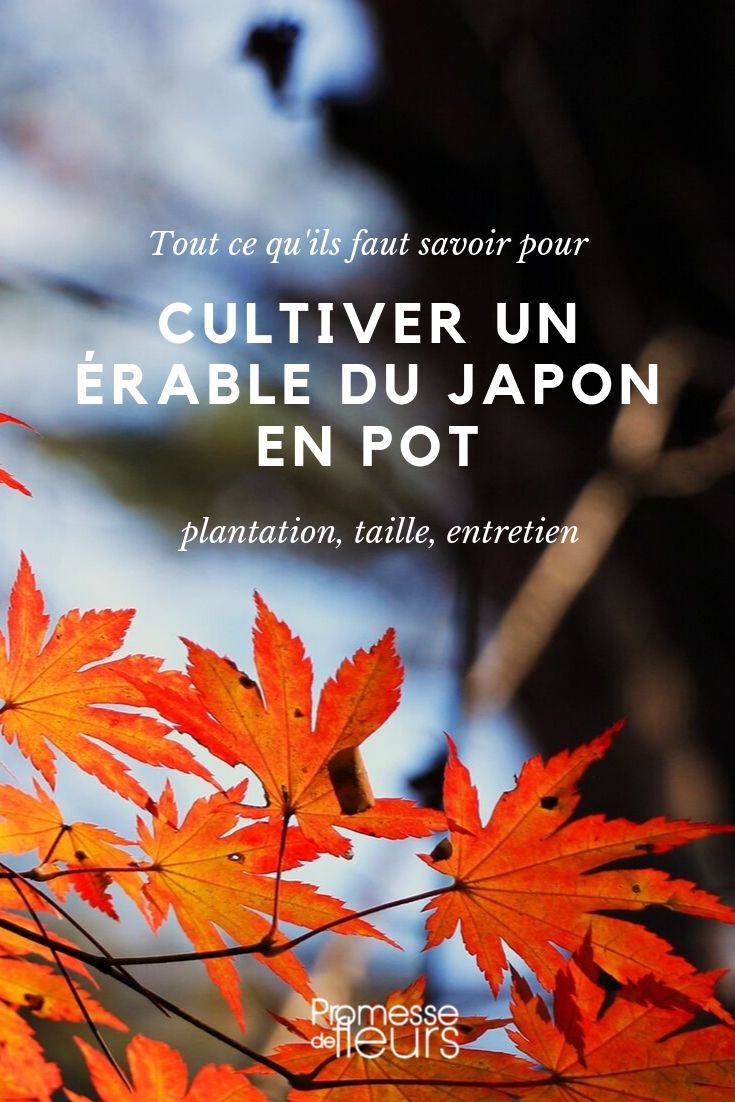
































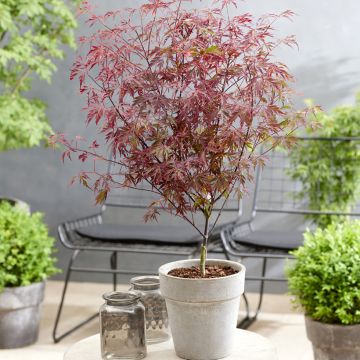

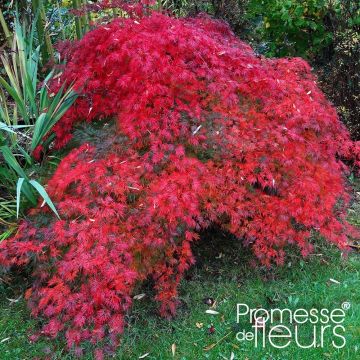
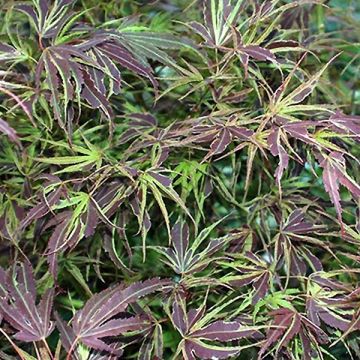


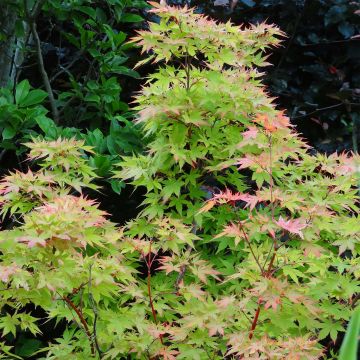
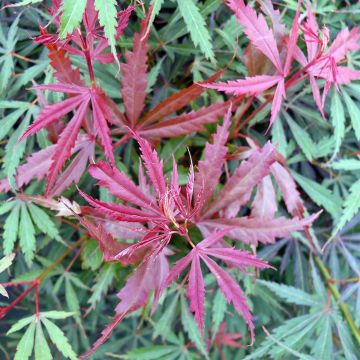
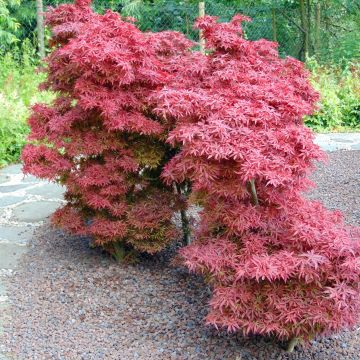
Comments